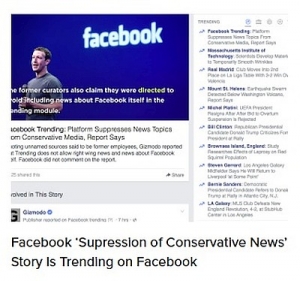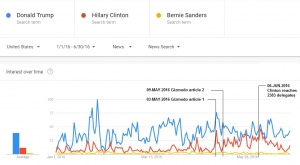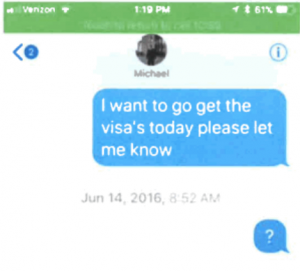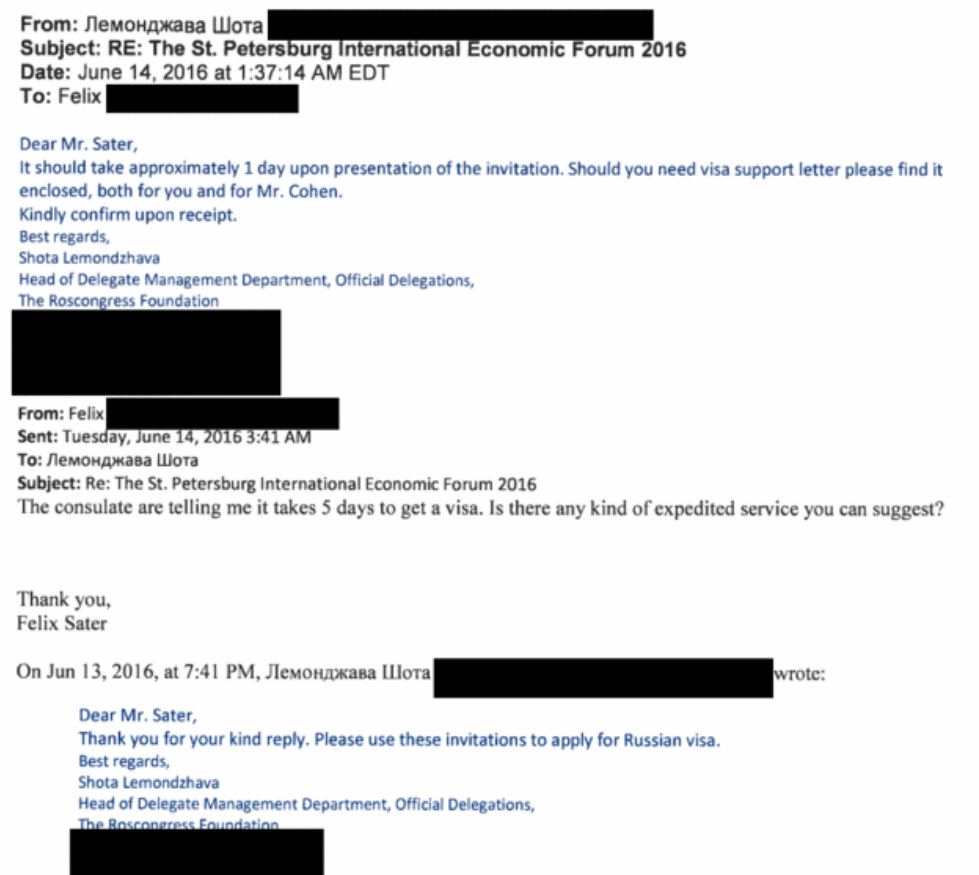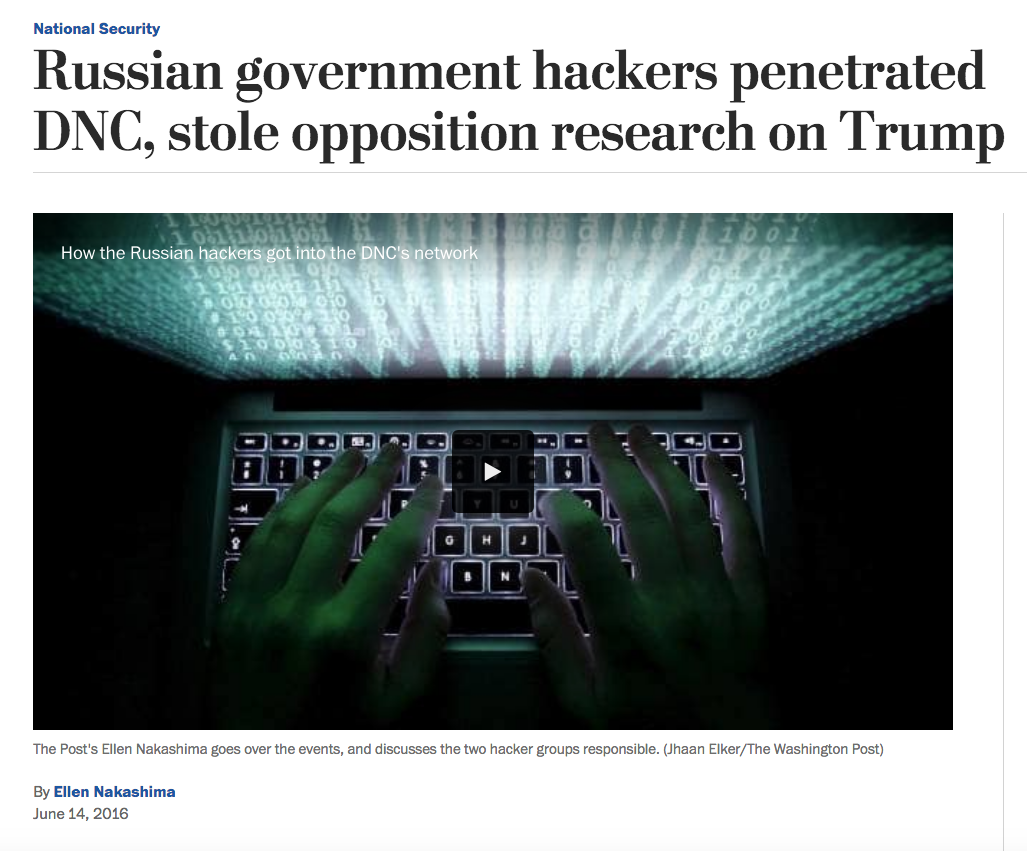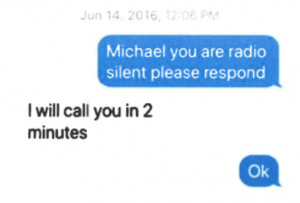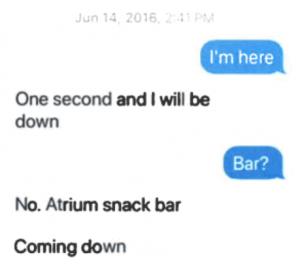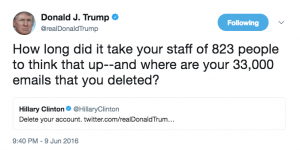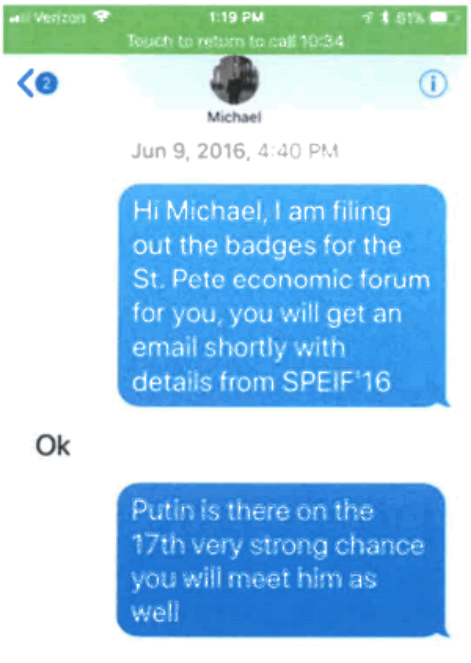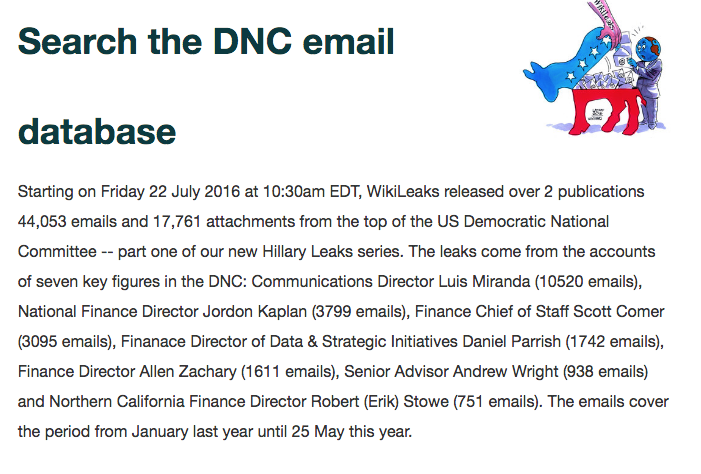I want to go back to something I’ve been uniquely obsessed about for almost an entire year. As I’ve noted, the Internet Research Agency indictment describes the IRA trolls interacting with three Trump campaign officials that it describes in the manner used with possible co-conspirators.
74. On or about August 15, 2016, Defendants and their co-conspirators received an email at one of their false U.S. persona accounts from a real U.S. person, a Florida-based political activist identified as the “Chair for the Trump Campaign” in a particular Florida county. The activist identified two additional sites in Florida for possible rallies. Defendants and their co-conspirators subsequently used their false U.S. persona accounts to communicate with the activist about logistics and an additional rally in Florida.
75. On or about August 16, 2016, Defendants and their co-conspirators used a false U.S. persona Instagram account connected to the ORGANIZATION-created group “Tea Party News” to purchase advertisements for the “Florida Goes Trump” rally.
76. On or about August 18, 2016, the real “Florida for Trump” Facebook account responded to the false U.S. persona “Matt Skiber” account with instructions to contact a member of the Trump Campaign (“Campaign Official 1”) involved in the campaign’s Florida operations and provided Campaign Official 1’s email address at the campaign domain donaldtrump.com. On approximately the same day, Defendants and their co-conspirators used the email address of a false U.S. persona, [email protected], to send an email to Campaign Official 1 at that donaldtrump.com email account, which read in part:
Hello [Campaign Official 1], [w]e are organizing a state-wide event in Florida on August, 20 to support Mr. Trump. Let us introduce ourselves first. “Being Patriotic” is a grassroots conservative online movement trying to unite people offline. . . . [W]e gained a huge lot of followers and decided to somehow help Mr. Trump get elected. You know, simple yelling on the Internet is not enough. There should be real action. We organized rallies in New York before. Now we’re focusing on purple states such as Florida.
The email also identified thirteen “confirmed locations” in Florida for the rallies and requested the campaign provide “assistance in each location.”
77. On or about August 18, 2016, Defendants and their co-conspirators sent money via interstate wire to another real U.S. person recruited by the ORGANIZATION, using one of their false U.S. personas, to build a cage large enough to hold an actress depicting Clinton in a prison uniform.
78. On or about August 19, 2016, a supporter of the Trump Campaign sent a message to the ORGANIZATION-controlled “March for Trump” Twitter account about a member of the Trump Campaign (“Campaign Official 2”) who was involved in the campaign’s Florida operations and provided Campaign Official 2’s email address at the domain donaldtrump.com. On or about the same day, Defendants and their co-conspirators used the false U.S. persona [email protected] account to send an email to Campaign Official 2 at that donaldtrump.com email account.
79. On or about August 19, 2016, the real “Florida for Trump” Facebook account sent another message to the false U.S. persona “Matt Skiber” account to contact a member of the Trump Campaign (“Campaign Official 3”) involved in the campaign’s Florida operations. On or about August 20, 2016, Defendants and their co-conspirators used the “Matt Skiber” Facebook account to contact Campaign Official 3.
Since this indictment was rolled out last February, no one has identified these three Trump campaign officials nor what they did in response to dangles from Yevgeniy Prigozhin’s trolls.
That said, contrary to the assumption made when a DC-based team of US Attorneys joined the IRA prosecution team, DOJ’s investigation on this front has continued. Not only was IRA accountant Elena Alekseevna Khusyaynova charged in EDVA last September (the complaint was unsealed in October, during a pre-election disinformation campaign involving IRA trolls), but in August, Mueller prosecutor Rush Atkinson was still pursuing investigative action in the IRA case (this means it’s possible that the involvement of a DC prosecutor in Roger Stone’s prosecution serves largely to keep the Mueller team targeting him focused on other aspects of their investigation of him).
In any case, since the mention of three different campaign officials interacting with Prigozhin’s trolls, we’ve gotten a number of other reasons to be interested in what happened in Florida in 2016.
Obviously, there’s Roger Stone. The actions laid out in his existing indictment largely take place in DC and NY, but we know Mueller has pursued (and continues to pursue, with Andrew Miller) testimony from aides working for Stone elsewhere, including in Florida. We know in May 2016, for example, Stone met in Florida with a Russian using the name Henry Greenberg offering dirt on Hillary. In principle, his denials on that should be taken no more seriously than his denials pertaining to WikiLeaks, but he was willing to correct his testimony on that point, unlike his testimony on WikiLeaks.
And there are other connections in Florida of interest. In a piece adding to stuff we already knew about Sergei Millian (which bizarrely remains silent about Ivan Timofeev and Oleg Deripaska’s ties to him, or his promise to build a Trump Tower), the WaPo describes how Millian worked with a Florida-based Russian named Mikhail Morgulis to build support in Florida.
As he was working to build a relationship with Papadopoulos in 2016, Millian also offered to serve as a conduit to the Trump campaign for a Belarusan author in Florida with connections to the Russian government, according to emails obtained by The Washington Post.
The author, Mikhail Morgulis, who said he never ended up hearing from anyone in the campaign, later claimed that he rallied Russian Americans to back Trump.
[snip]
Morgulis took credit in interviews with Russian media for helping to elect Trump by organizing Russian-speaking voters.
“I personally visited 11 cities in Florida, where I said that if you want our new president to be a homosexual . . . vote for Hillary,” he said a July 2017 interview with the Russian government-funded outlet Sputnik, touting a false claim popular among some conservative conspiracy theorists. In the interview, he also said he had briefly met both Trump and his son-in-law, Jared Kushner.
Then consider this detail from BuzzFeed’s report on what Suspicious Activity Reports say about Rinat Akhmetshin’s finances. Rather than getting paid by Lanny Wiles — as had previously been portrayed — Akhmetshin was in fact paying Wiles.
Akhmetshin continued receiving checks and wires from Wiles Consulting, a Florida-based company controlled by Lanny Wiles, a longtime Republican operator. Those payments, which began in January 2016, extended to April 2017, and totaled $72,500.
Investigators at Akhmetshin’s bank said the direction of the payments — from Wiles to Akhmetshin — contrasted with how their working relationship had been portrayed publicly. Investigators, citing unspecified public information, said Wiles claimed he was paid by Akhmetshin to work on the Magnitsky lobbying issue, not the other way around. The investigators did not cite their source, but a 2016 Politico article quoted Wiles saying he had been paid by Akhmetshin. Investigators at Bank of America did find that the foundation had issued checks to Wiles, but the amount is unclear. Wiles, whose wife was the chair of Trump’s Florida campaign, did not return messages seeking comment.
In the same Politico article, Wiles said he didn’t want to register as a foreign agent, but that Akhmetshin had told him it wouldn’t be necessary, as he would be working for BakerHostetler.
In the wake of the Natalia Veselnitskaya indictment in December, the government will have an easy time arguing that Akhmetshin and Wiles’ lobbying will easily be demonstrated to be work on behalf of Russia.
As noted, Wiles’ wife, Susie, was Trump’s Florida campaign chair, and the woman who got Veselnitskaya a seat in a hearing on Magnitsky sanctions.
Update: The Wiles’ daughter, Caroline Wiles, quit her White House job as director of scheduling after it became clear she’d fail a background check. (h/t LR)
Among those who won’t be working at the White House was President Donald Trump’s director of scheduling, Caroline Wiles, the daughter of Susan Wiles, Trump’s Florida campaign director and former campaign manager for Governor Rick Scott. Wiles, who resigned Friday before the background check was completed, was appointed deputy assistant secretary before the inauguration in January. Two sources close to Wiles said she will get another job in Treasury.
There seems to be a lot more that happened with Trump’s campaign in Florida in 2016 than we currently know about. Including the three campaign officials mentioned in the still active investigation into Yevgeniy Prigozhin’s trolls.
As I disclosed last July, I provided information to the FBI on issues related to the Mueller investigation, so I’m going to include disclosure statements on Mueller investigation posts from here on out. I will include the disclosure whether or not the stuff I shared with the FBI pertains to the subject of the post.
